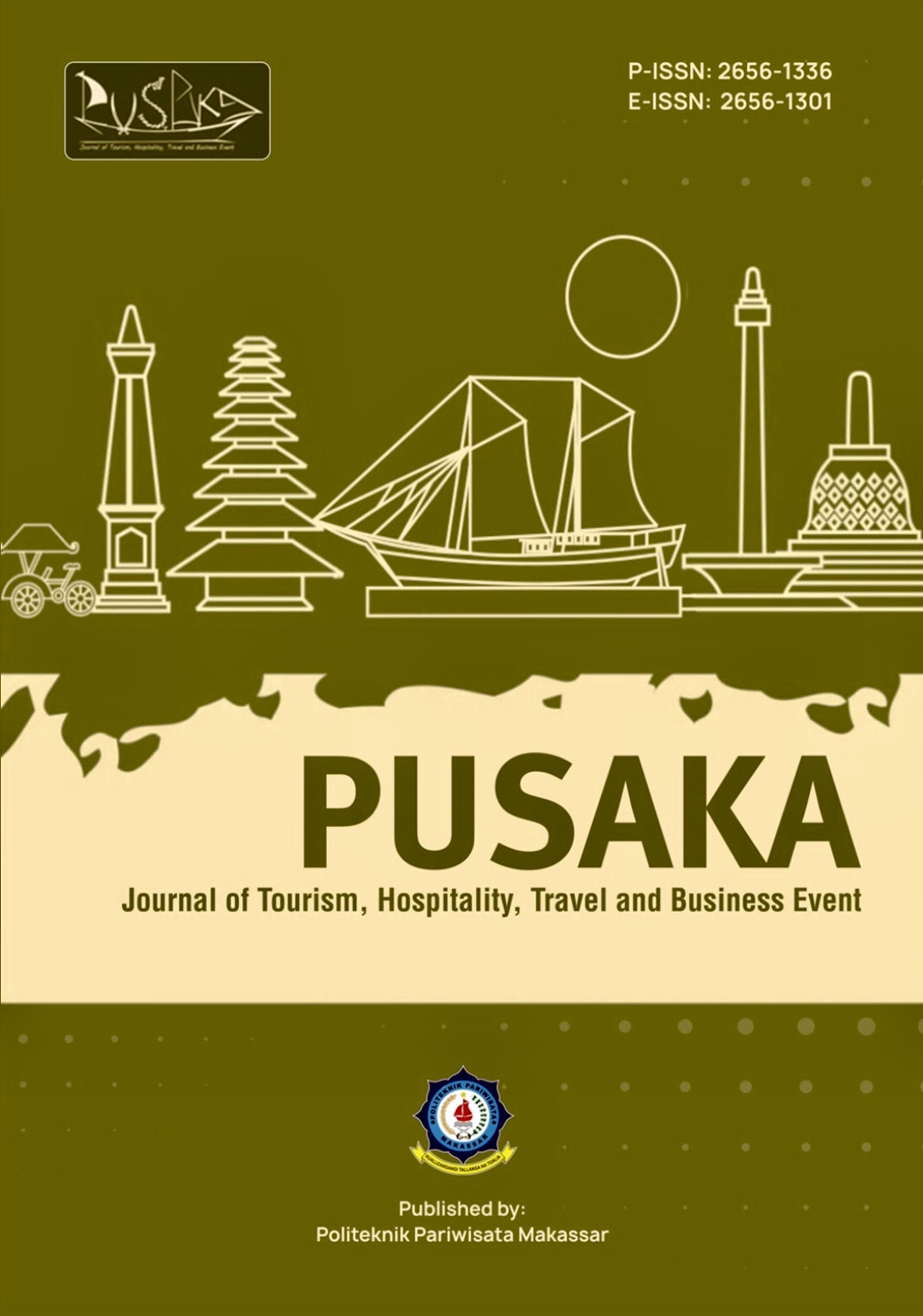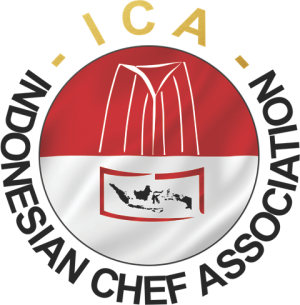Distribution Chain and Potential of Gonggong as a Culinary Tourism Destination in Bintan Island
DOI:
https://doi.org/10.33649/pusaka.v4i1.113Keywords:
gonggong, culinary tourism, gastronomy, food anthropology, culture, supply chain, promotionAbstract
This study aims to identify the Gonggong (dog conch) supply chain in Bintan Island and identify its potential to become a culinary tourism destination besides the well-known natural and cultural tourist destinations in Bintan Island. This is motivated by the existence of gonggong as endemic animals that only exist in the Riau Islands, especially in Bintan and Bangka Belitung Islands so that gonggong is known as a typical food of Bintan Island. However, this typical of Bintan Island is not yet nationally known like special foods of other regions. This study was conducted in Bintan Island using a descriptive-qualitative method to describe the supply chain and the potential of gonggong as a special food for culinary destination. Data was collected through in-depth and structured interviews and observations. The results of this study indicate that in terms of quantity, gonggong is available throughout the year with a tendency of abundant availability, and as a result, it has the potential of culinary destination for Bintan Island. In order for the gonggong culinary to be attractive to tourists, it needs packaging in a series of tourist travel attractions emphasizing foods and integrating it with cultural values of the local communities and with the rich natural phenomena of Bintan Island. Digital marketing strategies can be used for the purpose above through various social media or e-commerce platforms that are packaged in an attractive manner to build tourists’ perception that Gonggong is the typical culinary destination of Bintan Island that is worthy of visit.
References
Afrilian, Pepy. 2021. “Analisis Peran Dinas Pariwisata Kota Bukit Tinggi Dalam Meningkatkan Fasilitas Pada Objek Wisata Taman Margasatwa Kinantan.” Pusaka: Journal of Tourism, Hospitality, Travel and Business Event 3 (1): 44–48. https://doi.org/10.33649/pusaka.v3i1.30.
Allahar, Haven. 2015. “Small Island Visitor Attractions: A Development Process Framework.” SAGE Open 5 (1). https://doi.org/10.1177/2158244015577113.
Besra, Eri. 2012. “Potensi Wisata Kuliner Dalam Mendukung Pariwisata Di Kota Padang.” Jurnal Riset Akuntansi Dan Bisnis 12 (1): 74–101.
BPS Provinsi Kepri. 2019. “Laporan Kunjungan Wisatawan Mancanegara KEPRI 2019.”
Ellis, Ashleigh, Eerang Park, Sangkyun Kim, and Ian Yeoman. 2018. “What Is Food Tourism?” Tourism Management 68: 250–63. https://doi.org/10.4324/9780429426100.
Hall, C. Michael, Liz Sharples, Richard Mitchell, Niki Macionis, and Brock Cambourne. 2003. Food Tourism around the World. Edited by C. Michael Hall, Liz Sharples, Richard Mitchell, Niki Macionis, and Brock Cambourne. Butterworh-Heinemann. 1st ed. Vol. 1. Elsevier Ltd.
Hegarty, Joseph A., and G. Barry O’mahony. 1999. “Gastronomy: A Phenomenon of Cultural Expressionism and an Aesthetic for Living.” Journal of Hospitality and Tourism Education 11 (4): 25–29. https://doi.org/10.1080/10963758.1999.10685253.
Henderson, Joan C. 2009. “Food Tourism Reviewed.” British Food Journal 111 (4): 317–26. https://doi.org/10.1108/00070700910951470.
Horng, Jeou Shyan, and Chen Tsang (Simon) Tsai. 2010. “Government Websites for Promoting East Asian Culinary Tourism: A Cross-National Analysis.” Tourism Management 31 (1): 74–85. https://doi.org/10.1016/j.tourman.2009.01.009.
Horng, Jeou Shyan, and Chen Tsang Simon Tsai. 2012. “Culinary Tourism Strategic Development: An AsiaPacific Perspective.” International Journal of Tourism Research 14 (1): 40–55. https://doi.org/10.1002/jtr.834.
Ignatov, Elena, and Stephen L.J. Smith. 2006. “Segmenting Canadian Culinary Tourists.” Current Issues in Tourism 9 (3): 235–55. https://doi.org/10.2167/cit/229.0.
Kristiana, Yustisia, Michael Thomas Suryadi, and Samuel Riyandi Sunarya. 2018. “Eksplorasi Potensi Wisata Kuliner Untuk Pengembangan Pariwisata Di Kota Tangerang.” Khasanah Ilmu - Jurnal Pariwisata Dan Budaya 9 (1). https://doi.org/10.31294/khi.v9i1.3604.
Manalu, Jenny Christle Linanda, Febrianti Lestari, and Winny Retna Melani. 2015. “Pola Pertumbuhan Siput Gonggong (Strombus Canarium) Di Perairan Pulau Penyengat Kota Tanjungpinang Provinsi Kepulauan Riau.” Raja Ali Haji Maritime University.
Muliani, Lila. 2019. “Potensi Bubur Ase Sebagai Daya Tarik Wisata Kuliner Jakarta.” Destinesia : Jurnal Hospitaliti Dan Pariwisata 1 (1): 49–56. https://doi.org/10.31334/jd.v1i1.485.
Muzahar, and Agus Alim Hakim. 2018. “Spawning and Development of Gonggong Strombus Sp. Larvae in the Laboratory.” Jurnal Ilmu Dan Teknologi Kelautan Tropis 10 (1): 6–7.
Ni Komang Thessy Aprelia, Ni Komang Thessy Aprelia, and Putu Diah Sastri Pitanatri. 2021. “Efektivitas Penerapan E-Commerce Melalui Website Dalam Meningkatkan Tingkat Hunian Kamar Di Ayodya Resort Bali.” Pusaka: Journal of Tourism, Hospitality, Travel and Business Event 3 (1): 28–36. https://doi.org/10.33649/pusaka.v3i1.69.
Ortega, Enrique, and Beatriz Rodríguez. 2007. “Information at Tourism Destinations. Importance and Cross-Cultural Differences between International and Domestic Tourists.” Journal of Business Research 60 (2): 146–52. https://doi.org/10.1016/j.jbusres.2006.10.013.
Prayogi, Dian. 2017. “Pengembangan Potensi Wisata Kuliner Kota Malang Berbasis Sumber Daya Lokal.” Jurnal Pariwisata Pesona 2 (1): 1–13. https://doi.org/10.26905/jpp.v2i1.1260.
Sammulia, Suci Fitriani, Hasyrul Hamzah, Chaerul Fadly Mochtar, and Amelinda Oktaviano. 2021. “Effervescent Tablet Formulation and Physical Evaluation of Gong-Gong Shell Waste (Strombus Turturella).” International Journal of Pharmaceutical Research 13 (01). https://doi.org/10.31838/ijpr/2021.13.01.552.
Sianjuntak, Hendra Hasiholan, Arief Pratomo, and Fadhliyah Idris. 2017. “Konfirmasi Kila Sebagai Atraktan Gonggong ( Kasus Praktek Lokal Masyarakat Di Perairan Senggarang ).” Universitas Maritim Raja Ali Haji.
Susiana, Azwin Apriandi, and Rochmady. 2019. “Identifikasi Jenis Kelamin Siput Gonggong Strombus Sp. Secara Morfologi Di Perairan Madung, Tanjungpinang, Indonesia.” Junral Ilmu Dan Teknologi Kelautan Tropis 11 (3): 555–67.
Suteja, I Wayan, and Sri Wahyuningsih. 2019. “Strategi Pengembangan Potensi Kuliner Lokal Dalam Menunjang Kegiatan Pariwisata Di Kawasan Ekonomi Khusus Mandalika Kabupaten Lombok Tengah.” Media Bina Ilmiah 14 (2): 2035–42.
Syahrial, Lily Dianafitry Hasan, Muhammad Musawantoro, and Faisal Akbar Zainal. 2020. “Effect of Online Marketing ( E-Commerce ) Activities to the Advantages of Competing Traditional Culinary Products in South Sulawesi.” Journal of Tourism, Hospitality, Travel and Busines Event 2 (1): 66–72.
Viruly, Lily. 2011. “Pemanfaatan Siput Laut Gonggong (Strombus Canarium) Asal Pulau Bintan-Kepulauan Riau Menjadi Seasoning Alami.” Institut Pertanian Bogor
Downloads
Published
How to Cite
Issue
Section
License

This work is licensed under a Creative Commons Attribution-ShareAlike 4.0 International License.






















